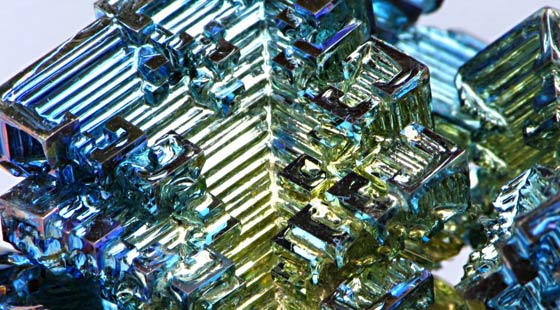Boffins at the University of Surrey have been experimenting in order to solve a problem that has, until now, severely hindered the development of nuclear batteries. With their new understanding of the unstable isotope of bismuth, Bi-212, under their belts the scientists now hope to move onto the “next step” and, in the longer term, control the release pof nuclear energy “on demand”.
Prof Phil Walker, of Surrey University's Department of Physics, said about the research team’s findings “The new understanding gives us confidence in the nuclear theory, which guides us to the next step of experimentation. It is hoped that this may, in the longer term, lead to the ability to control a form of trapped nuclear energy, with the ability to release the energy on demand.”

Bismuth crystals
Batteries with a million times more energy
Online science magazine Phys.org suggests the way that Prof Walker and his colleagues have utilised charged Bi-212 particles in a special storage ring could have “potential far reaching consequences”. The portable power supplies consisting of such batteries could pack “up to a million times more energy compared to a conventional battery”, wrote the Phys.org reporter.
The next step in the progress of the nuclear battery is to find ways to tap into the trapped energy stored in these excited Bi-212 particles. Now that scientists can, for the first time, directly observe bismuth’s trapped energy state, possible ways to release this energy in a controlled way are emerging.













